What happens when you remove the LGU’s muzzle cap?
Figure 8.1 shows a photo of the LGU’s removed muzzle cap next to the muzzle tube where it was held by a screw. The muzzle cap weighs 36 g (1.3 oz). Since I’m using a computer hard drive magnet to hold the end of the cocking lever in place, I also removed the cocking lever latch. For more info on these mods, please see:
https://www.gatewaytoairguns.org/GTA/index.php?topic=168525.0
During the middle of the swing, the barrel muzzle is moving the fastest and its direction is changing the most. Therefore, if the pellet leaves the barrel when the muzzle is in the middle of its swing, small changes in the pellet exit time and/or the barrel vibration will cause pellet POI to be more spread out laterally. On the other hand, if the pellet leaves the barrel when the muzzle is at the end of its swing, and therefore stopped and is about to turn around to head back in the opposite direction, there will be much less variation in the muzzle orientation and accuracy will be much better.
Removing the weight of the muzzle cap changes the barrel harmonics towards the more favorable situation where the pellet leaves at the end of the muzzle swing. Recent measurements have shown that this is the case. Using a DIY angle-o-meter, I found that with the muzzle brake attached, the pellet leaves the muzzle when the barrel is swinging down, near the middle of its swing. Without the muzzle brake, the barrel oscillations are faster and the pellet leaves near the bottom of the muzzle swing, causing the POI to be lower and the vertical dispersion to be less, since the muzzle is stopped at the bottom of the swing when the pellet exits. For more details on this, please see my post in Shooting the Breeze:
https://shooting-the-breeze.com/threads/barrel-vibration-measurements-in-my-lgu.52757/

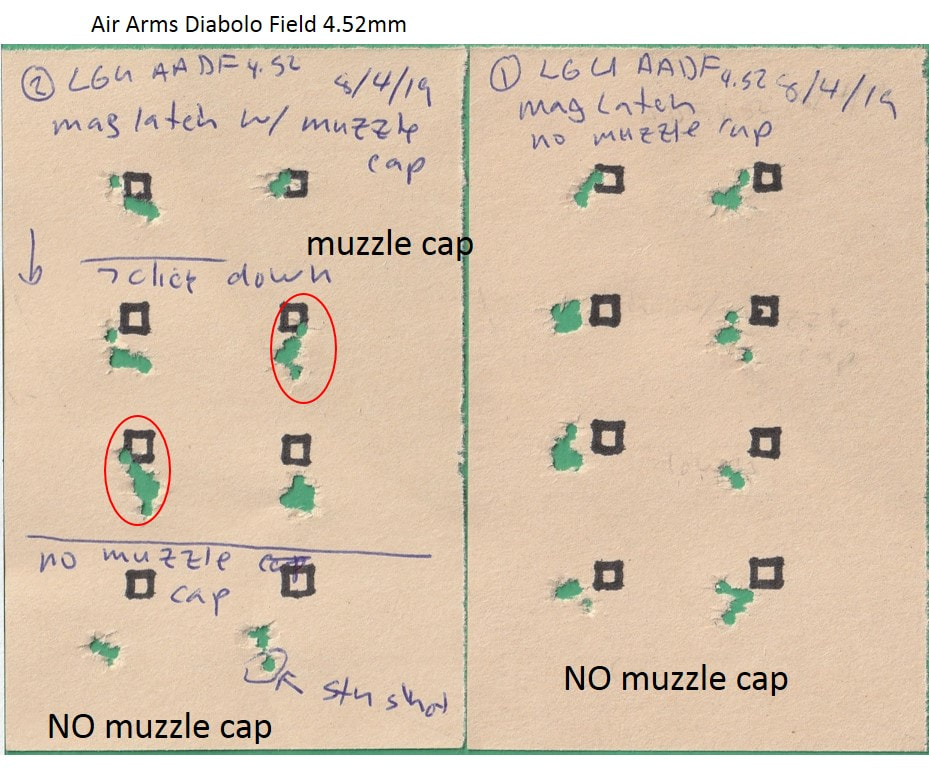
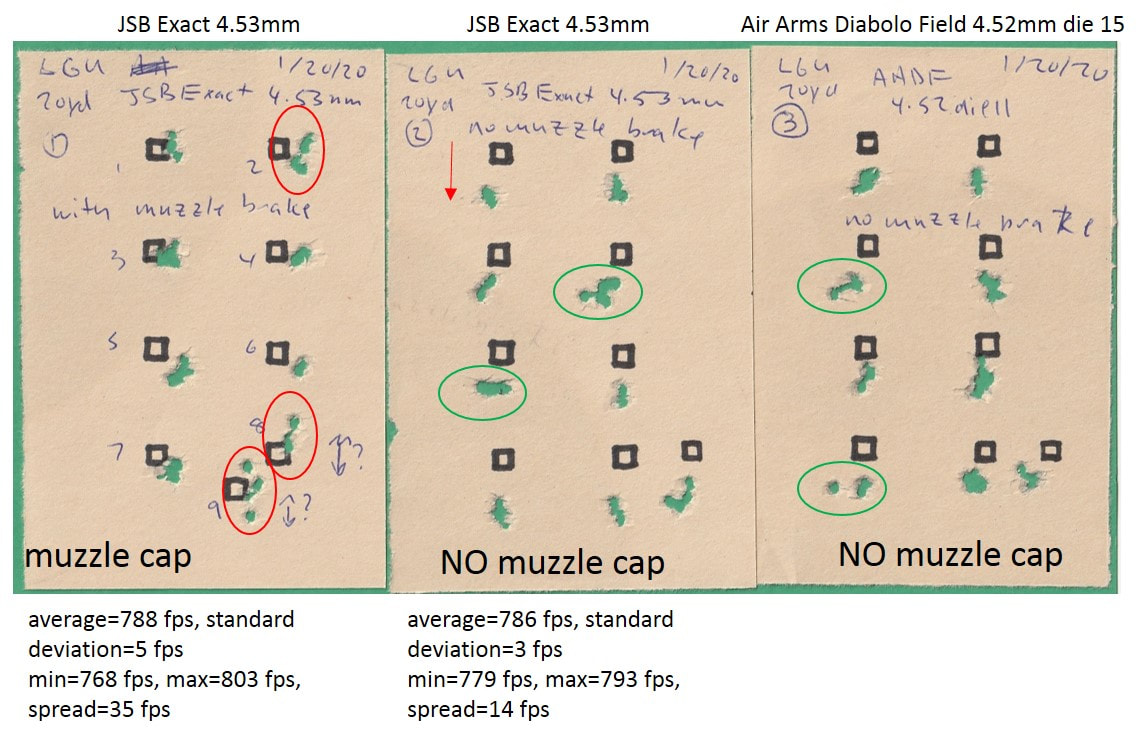
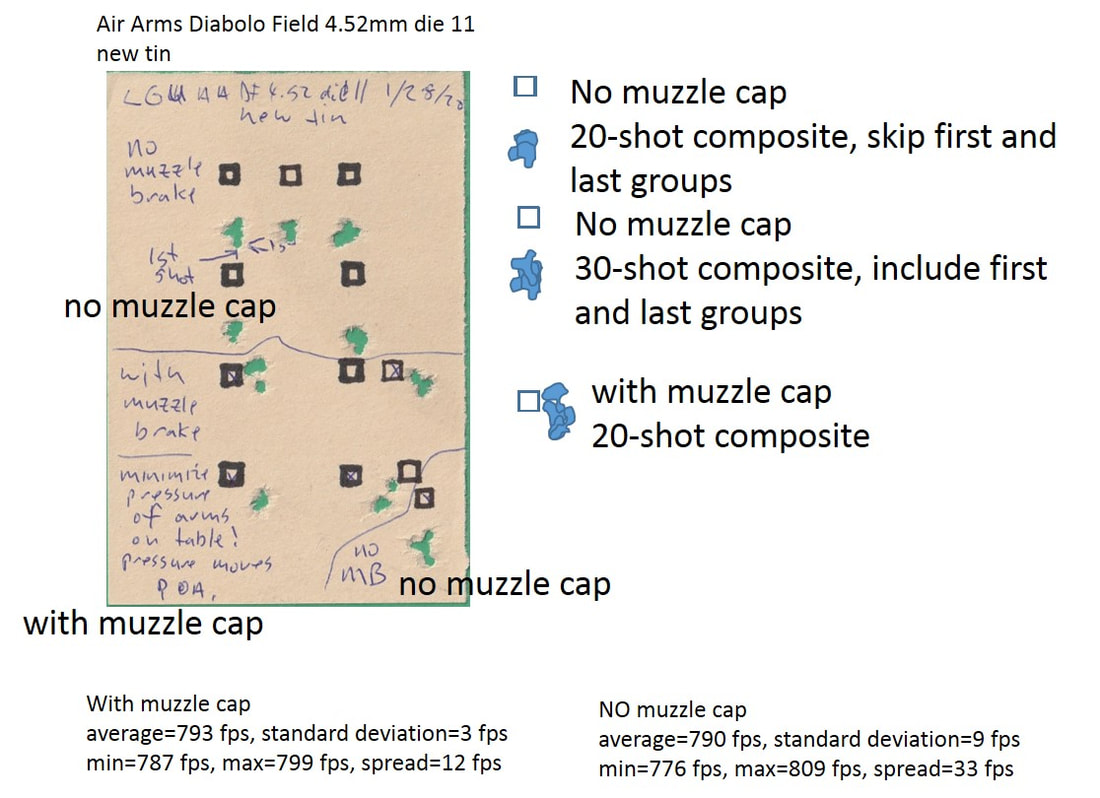
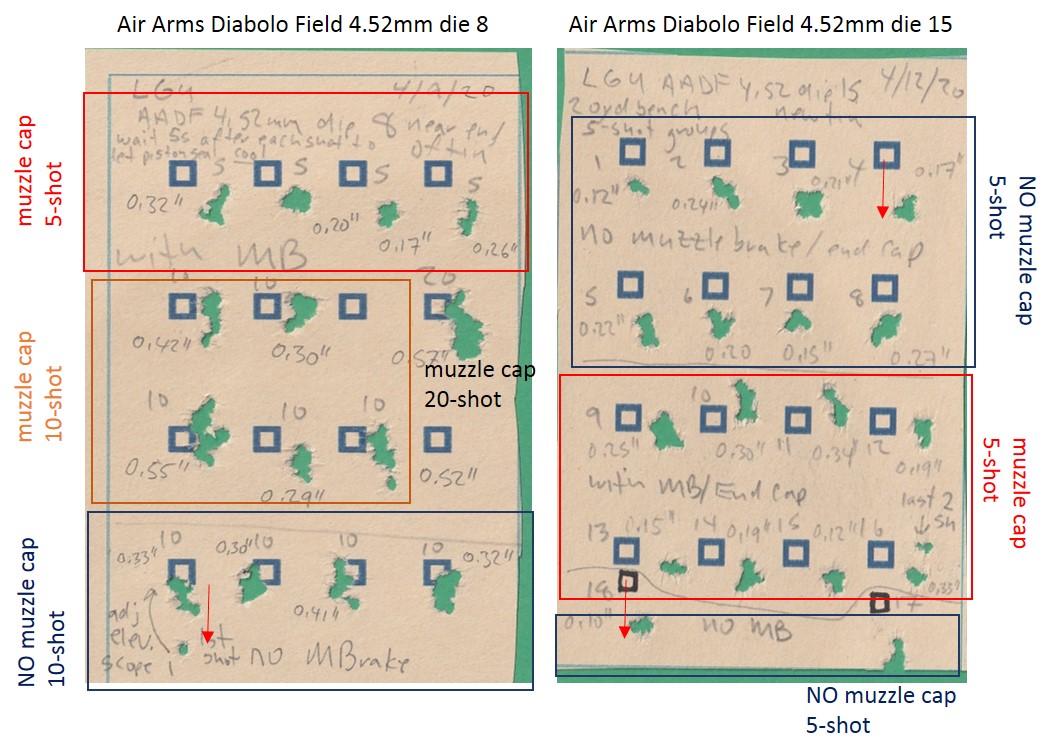
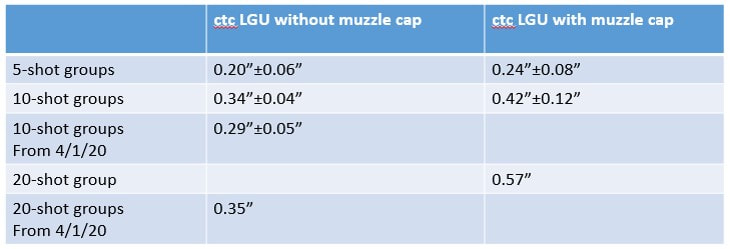

 RSS Feed
RSS Feed